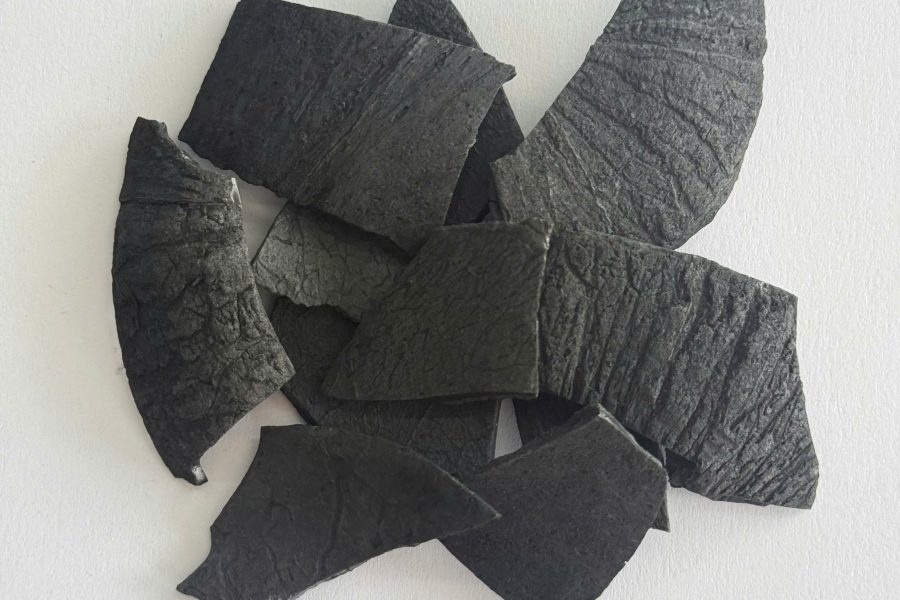A Sustainable Agricultural Solution to Improve Soil, Retain Water, Boost Yields, and Mitigate Climate Change
1. Introduction to Biochar
Biochar is a carbon-rich material produced through the pyrolysis of biomass under limited oxygen conditions. Unlike traditional charcoal, biochar not only has energy value but also delivers outstanding benefits for agricultural soils, the environment, and climate change mitigation.
With a stable production capacity of 10,000 tons per year, biochar is increasingly applied in organic farming, regenerative agriculture, and smart farming models that adapt to climate change.
2. Characteristics and Production of Biochar
Biochar is produced by heating biomass such as rice straw, coffee husks, cashew shells, sawdust, or rice husks in low-oxygen conditions.
The process takes place at 350–700°C, retaining most of the carbon in the biomass while releasing gases such as CO, H₂, and CH₄ for energy use. The result is a lightweight, porous, carbon-rich material with a honeycomb-like structure and large surface area.

3. Agricultural Benefits of Biochar
3.1. Soil Improvement
Biochar enhances soil structure, especially in sandy, eroded, or nutrient-poor soils. Its porous structure improves aeration, water retention, and nutrient availability, creating an ideal environment for soil microorganisms.
3.2. Water Retention and Drought Resistance
Acting like a “sponge,” biochar absorbs water many times its weight. This helps crops maintain stable moisture during drought conditions.
3.3. Reduced Nutrient Loss
Biochar captures and retains nutrients such as nitrogen, phosphorus, and potassium, minimizing leaching and volatilization. This ensures better nutrient uptake by crops and reduces dependence on chemical fertilizers.
3.4. Higher Yields and Better Crop Quality
Studies show biochar can increase crop yields by 10–30%, depending on soil type and crop. It also improves product uniformity and long-term crop sustainability.
4. The Role of Biochar in Climate Change Mitigation
4.1. Long-Term Carbon Sequestration
Unlike raw biomass that decomposes and releases CO₂, the carbon in biochar is “locked” in the soil for hundreds to thousands of years—an effective carbon-negative solution.
4.2. Reduced Greenhouse Gas Emissions
Biochar reduces emissions of nitrous oxide (N₂O) and methane (CH₄), two greenhouse gases far more potent than CO₂. This makes agriculture more environmentally friendly and aligned with low-emission policies.
5. Practical Applications of Biochar
5.1. Crop Cultivation
Biochar is often mixed with soil or organic fertilizer to improve farming efficiency. It is suitable for growing vegetables, fruit trees, rice, coffee, pepper, cashew, and in organic or circular farming models.

5.2. Livestock and Composting
In animal farming, biochar is used as a bedding additive to absorb ammonia, reduce odors, and lower harmful emissions. When mixed with manure, it accelerates composting, minimizes nutrient loss, and produces high-quality organic fertilizer.
5.3. Wastewater Treatment and Environmental Remediation
Due to its strong adsorption capacity, biochar is applied in treating agricultural wastewater, aquaculture systems, and in restoring polluted soils.
6. Why Choose Biochar from IMES Vietnam
-
Stable production capacity of 10,000 tons per year
-
Made from 100% renewable biomass
-
Modern, closed-loop, eco-friendly production process
-
Strict quality control for every batch
-
Technical support for agricultural and livestock applications
Biochar is more than just a soil amendment—it is a strategic solution for sustainable, circular, and climate-smart agriculture that improves soil health, increases yields, and reduces greenhouse gas emissions.
Contact IMES Vietnam – Your Partner in Sustainable Agriculture
📍 Address: Road No.9, Dong Xuyen Industrial Park, Rach Dua Ward, Vung Tau City, Vietnam.
📞 Hotline: (+84) 225 462 78279.
📧 Email: business@imesvn.net
🌐 Website: https://imesvn.net
👉 IMES Vietnam – Partnering with farmers for greener agriculture and a sustainable future.

